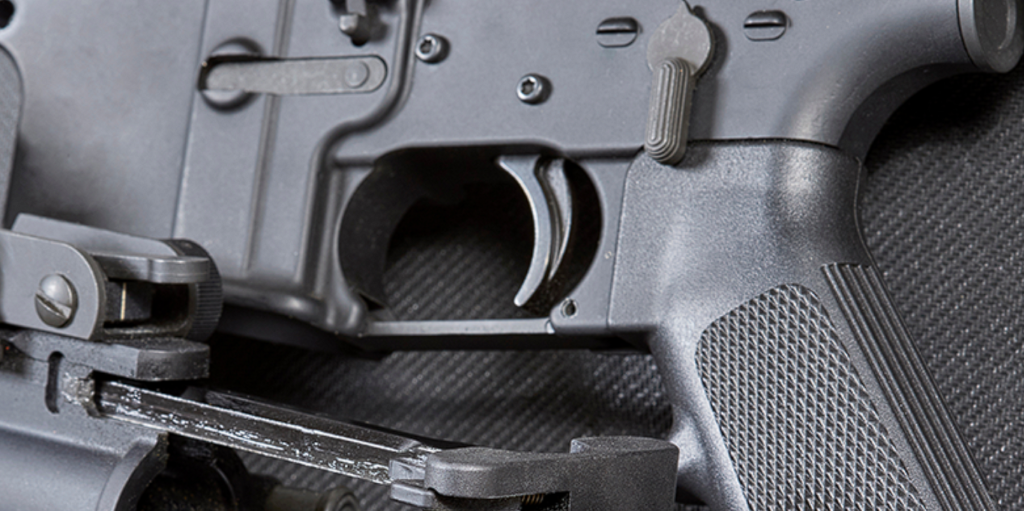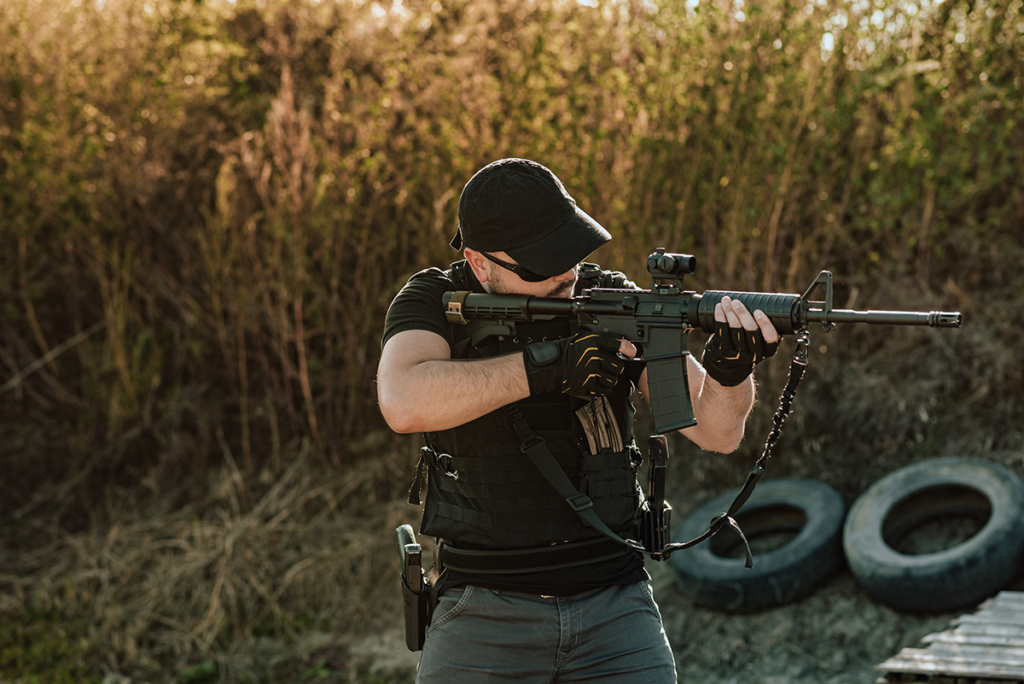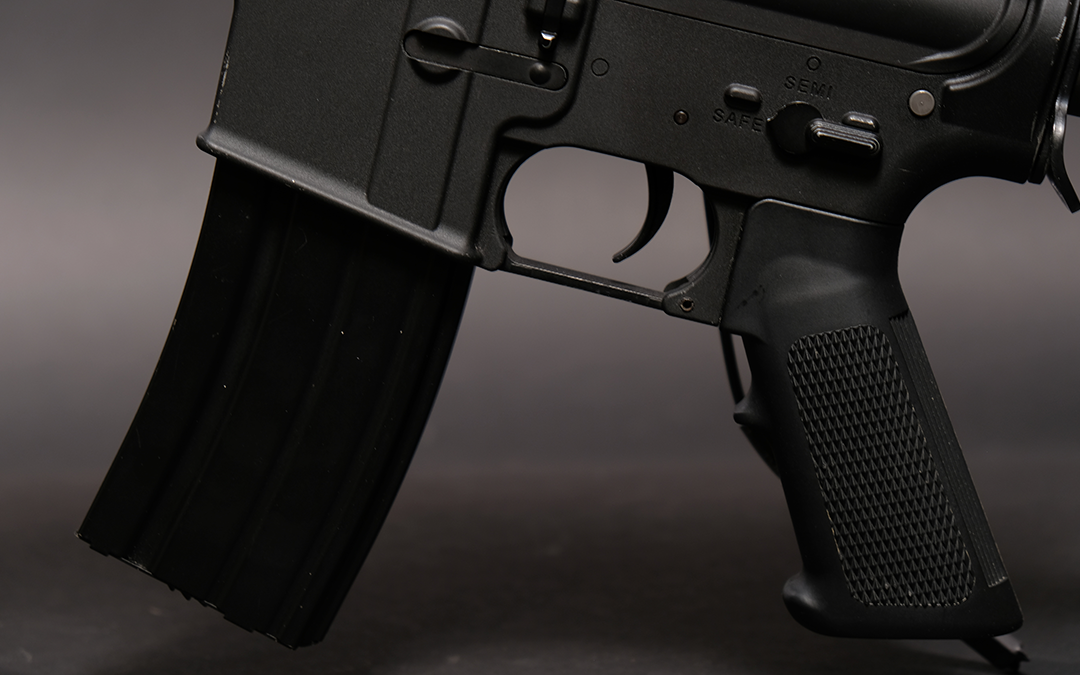Are you looking to take your AR-15 build to the next level? Let’s discuss everything there is to know about different triggers available for an AR-15 — from mil-spec single-stage triggers up to choosing a drop-in trigger or a kit trigger.
Parts of the Trigger
- Trigger– The trigger is the portion of the trigger group that is squeezed by your finger, initiating the firing sequence.
- Hammer-The hammer is the spring-loaded portion of the trigger that, when released, strikes the firing pin.
- Sear-This is the junction between the trigger and hammer. This is what stops the hammer from striking when you are not firing.
- Disconnector-The disconnector catches the hammer as it is brought back by the bolt carrier group during the firing cycle; this does not allow another firing cycle to begin.
- Hook-The hook is the portion of the trigger the disconnector catches on to keep the hammer in its reset position.

Single Stage Vs. Two Stage Triggers
Single-stage triggers may be the most common type of AR-15 trigger on the market, but their popularity stems from more than convenience. A single-stage trigger is simple in operation; you depress it until it engages with the sear and causes the hammer to fall. The trigger has minimal slack, meaning all its weight is pressed against the spring-loaded mechanism immediately. Depending on how much surface engagement, it can feel heavier, giving the shooter an additional challenge as they walk through its activation point. The movement it takes for the hammer to release is called creep.
Two-stage triggers are arguably one of the market’s most intuitive, consistent, and safe triggers. You can tell a two-stage from other triggers by its initial take-up that’s both light and short, but it’s not to be confused with creep; once you get past the take-up, you come across a wall that has just enough weight, making sure your rifle won’t get bumped off while giving you a predictable break point for when you’re ready to fire. Furthermore, this two-stage design allows for “prepping” – all you need to do is look through the sights, remove the initial slack in the trigger, and settle into the remainder of the wall’s weight until it’s time to squeeze off a round!

Drop-In Vs. Kit Triggers
Two popular choices include a drop-in trigger and a user-assembled kit. Both types have their respective merits; it all comes down to your preferences and needs when choosing the best. Drop-in triggers are typically higher quality and easier to install, so if your primary concern has a more straightforward installation process, this could be what you’re looking for. On the other hand, it could require more effort to install correctly, but it can also be just as high in quality. Another bonus is that these models are slightly easier to clean. If something happens to break or malfunction along the way, you can easily swap out individual pieces instead of replacing the entire assembly like you would have to do with a drop-in trigger.
When it comes to triggers, you can even get into more complex levels of spring weight, material, or even how it is produced from injection molding or casting. Suppose you’re a beginner shooter looking for a trigger for your build or just looking to replace the one you have. In that case, mil-spec triggers are generally a good option, and as you become more experienced with your equipment and needs, you can start looking into other options for your AR-15 build.

